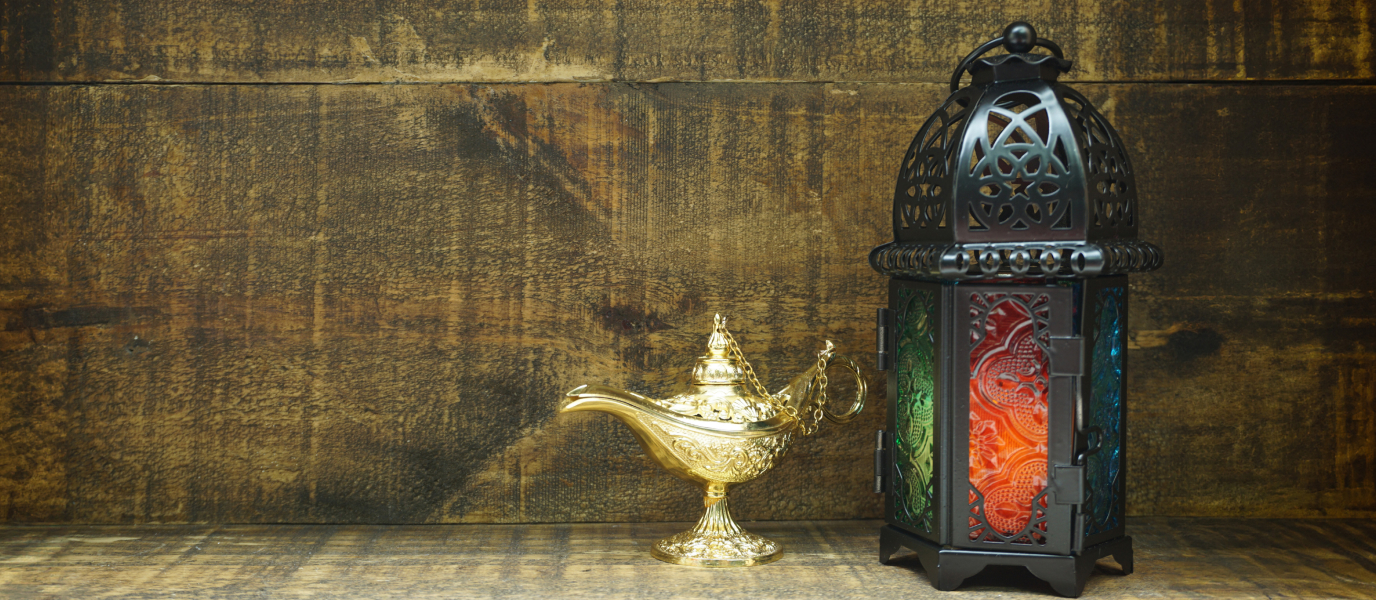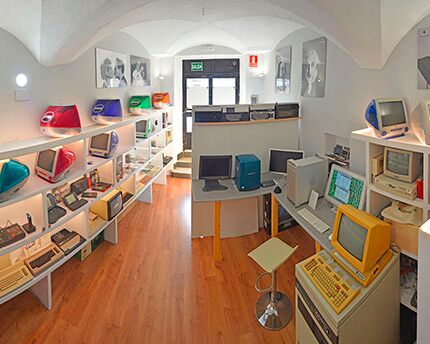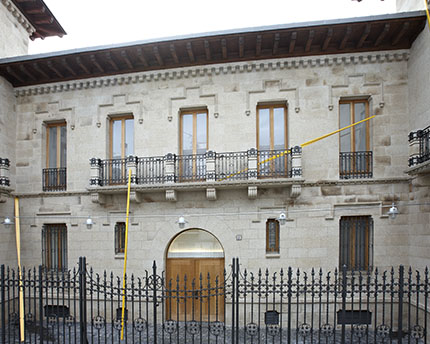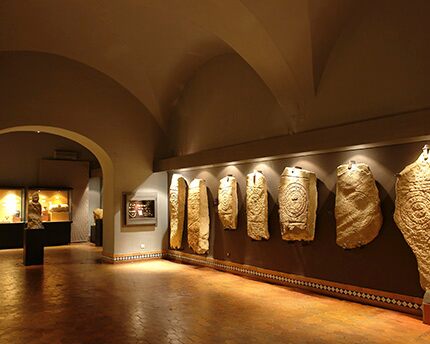The old quarters of Cáceres are full of hidden gems. Many of these are a testament to its Christian medieval past, but the Muslim influence is also palpable. Tribes from North Africa used the city’s strategic location to fend off the Christians during the Reconquista. As you wander around the Old Town keep your eyes peeled for cultural landmarks, such as the Palacio de los Golfines de Abajo and, at the top of Cuesta del Marqués street, Casa Museo Árabe Yusuf Al Burch.
You’ll feel like you’ve stepped back in time.
Interesting facts about Casa Museo Árabe Yusuf Al Burch
The last person to own the house was José de la Torre Gentil, who bought the property in the 1960s. He originally intended to renovate the old two-storey house and sell it, but the restoration work revealed Roman and Moorish ruins inside. He fully renovated the building and moved in with his family.
Gentil was a lover of archaeology and history and spent more than ten years bringing the house back to life. The work uncovered the original vaults in different rooms, the cistern and the hammam. He invested time and money into bringing out the beauty of the building, to show it in all its glory to the public. He also sought help from scholars and researchers specialising in this type of architecture to ensure that the renovation was as respectful as possible. They discovered that the house had been built in the 12th century on Roman foundations and must have belonged to a wealthy Arab merchant.
Among those present at the unveiling of Casa-Museo Yusuf Al Burch in 1976 was the Ambassador of Iraq. Since then, countless others have travelled across the globe to take a look at this unusual building.
What to see at Casa Museo Árabe
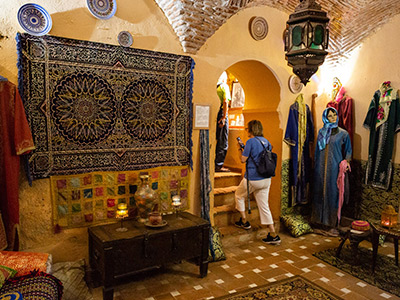
Painstaking efforts have been made to restore the different rooms while paying attention to historical accuracy, to make visitors feel as if they have travelled back in time. As you walk from room to room the architecture and original articles donated to the museum give you an idea of how the affluent Arab society lived in Cáceres. The tour takes you through the following rooms:
- Hallway. From the hallway you can see the kitchen, which is accessed through a horseshoe arch doorway, and the four-metre deep cistern, excavated into the rock. Here you will also see the pantry, a smaller room where food was stored.
- Tea room. A stunning Mudéjar arch, typical of Granada, leads into this room. The impeccable decor aims to recreate the space where the head of the household received visitors or spent time reading. The display cabinets showcase replica objects and gifts from important people.
- Weapons room. Adjacent to the tea room. Originally this was the dining room, although now it is used to display objects found during the restoration work, such as daggers and scimitars. This room leads to the inner courtyard through a horseshoe archway.
- Inner courtyard. This area used to be much bigger than it is now because it was used as a stable, orchard garden and storeroom. The courtyard is filled with plants, giving an idea of what it was like to be there under the heady scent of orange blossom and jasmine. Remains of a fountain can be seen in the centre, featuring two well-preserved lion heads.
- Ball room. This room is evidence of the owner’s power and influence. It is at the end of the courtyard and includes a large stage where dancers and musicians performed. Typical instruments of the period are displayed and there is a tapestry depicting a dance scene.
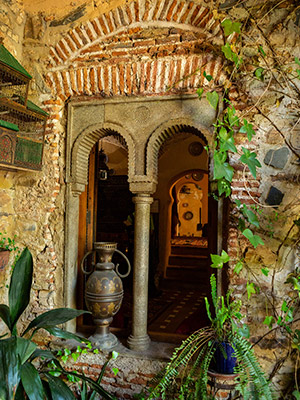
Casa Museo Árabe Yusuf - Harem. Through another horseshoe archway and you are inside one of the more private rooms. This space, adjacent to the master bedroom, was reserved for the women. The double-barrel vault and the multifoil arch window that looks into the courtyard are two of the most striking architectural features.
- Bedroom. This room is at the highest level in the house, implying it is the most important. It houses a collection of statues, a gift from the Iraqi Embassy to mark the unveiling of the house.
- Cellar. The next stop is the cellar, which was used to store fresh food. It was built on top of the stone cistern and is the coldest room in the house, where the temperature remains constant at 14 degrees.
- Hammam. These Arab baths are excavated into the rock and are reached via a long corridor, with a barrel-vaulted ceiling, and down some steps. They were used for steam baths, served by a boiler underneath the courtyard, and thermal baths. They were also used to heat the rooms directly above. The space was probably lavishly decorated, and occupants would have come here to take relaxing baths, enveloped by perfume.
Casa Museo Árabe Yusuf Al Burch is an excellent example of an authentic building of the times. Many people also say the house is haunted and a strange presence can be felt, shrouding the house in mystery. Legends aside, this exceptional work of restoration and conservation is definitely worth visiting.
























































